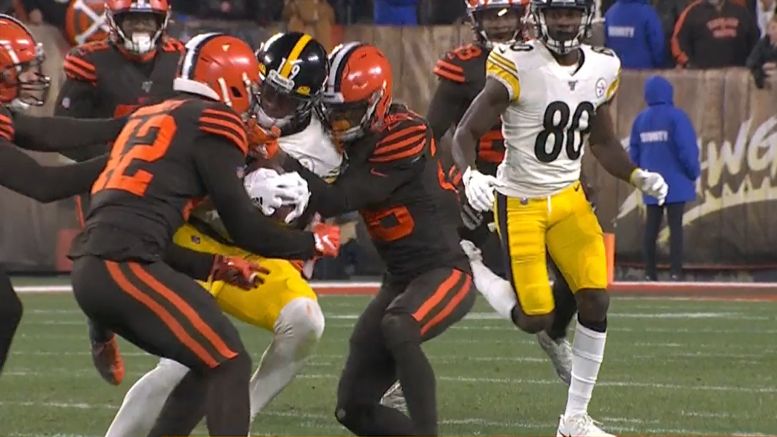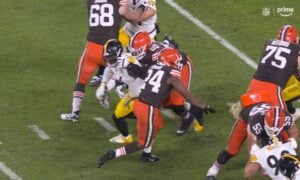The National Football League at some point is going to have to acknowledge that it, as purveyors of a violent sport, has a concussion problem and that its efforts to minimize that reality only make it worse for themselves.
There is the general acknowledgment that concussions are a part of the game, of course, after decades of denial and lawsuits and millions and millions of dollars paid out to former players (even that not without its own controversies), but then we still have situations like this past week that raise the questions of whether or not the league is doing enough.
Miami Dolphins quarterback Tua Tagovailoa played two games in four days despite exhibiting possible concussion symptoms during Sunday’s game, which he and the team’s medical staff attributed purely to a back injury, following a play on which he hit his head on the ground. He suffered another collision with the ground directly to his head on Thursday and left the game on a stretcher heading to a hospital.
It’s raised what I believe are three very important factors that are not properly weighed within the league’s concussion protocols. First, we underrate the significance of the visual evidence of concussions, given the vagaries of actually diagnosing symptoms after the fact. Second, we are clearly not adhering properly to ‘no-go’ symptoms that should automatically rule a player out by erring on the side of caution.
Most importantly, we are overrating the most unreliable piece of the puzzle, the player himself. How many players by now have gone on record to state that they have knowingly, willingly, and purposely lied about not having concussion symptoms so that they could continue playing, for whatever personal reason they may have had?
Pittsburgh Steelers defensive captain Cameron Heyward knows all about that. He’s no doubt been around those teammates, and he knows that it has to be the NFL’s job not to leave it in the hands of the players to decide if they’re okay.
“Concussions are not a thing you really want to mess around with”, he said on Friday, via Chris Adamski of the Pittsburgh Tribune-Review. “It’s just, who’s protecting the player from themselves?”. There are numerous reasons a player may give false information in this context—including lacking the cognitive faculties to properly answer.
And whether they lie or not, we have situations like the Tom Savage concussion from 2017, which was the impetus for some modifications of the concussion protocols then, which have quickly faded or been disregarded at times when inconvenient for teams. Those changes were supposed to include immediately ruling out any player exhibiting “seizure-like symptoms”. How is that going?
“Of course, whether it’s the pressure from another player, or a teammate, or a coach, or your fans, you don’t want to let them down”, Heyward said. “But who is protecting us from us? Because, you know, there’s a difference between playing hurt and playing injured”.
And head injuries are a completely different ball game from any other body part. Some players, perhaps many, will say that they would rather take a hit to the head than to the knee, but they might change their minds 20 years down the road.
The bottom line is this: not every player really understands the full magnitude of how concussions can affect them in the long term. But the NFL does. They know better than anybody, because they are the ones who spent decades hiding the information. it has to be on the league and on the teams to override the player and go by what you see and what you can test, and not whether or not a player tells you that he’s fine.
Because a lot of players have said it and not been. Just ask Matt Moore, who didn’t even miss a play after taking a vicious hit from Bud Dupree despite lying on the field for some time, only later to be diagnosed with a concussion. The Dolphins were fined for that, by the way.








